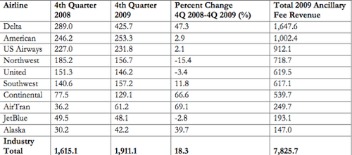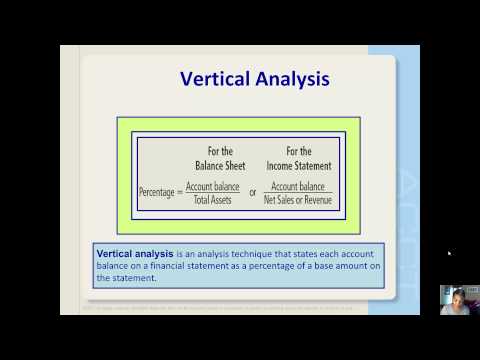
Gross profit is sometimes referred to as gross income, gross revenue or sales profit. The multi-step method will calculate gross profit, operating income, and net income. It groups the cost to make products or services as costs of goods sold (COGS). Operating expenses are administrative, general, and selling expenses that are related to running the business for a specific period of time. This includes rental expenses, payroll, utilities, office supplies, and any indirect costs required to operate the business.
- These statements conveniently display gross profits as a separate line item, but they are only available for public companies.
- Gross profit is the difference between net revenue and the cost of goods sold.
- After studying the various components of the skeletal P&L statement, it should be evident that all of these components are interrelated.
- Adam Hayes, Ph.D., CFA, is a financial writer with 15+ years Wall Street experience as a derivatives trader.
- The profit and loss statement is important because it tells you if your business is turning a profit.
A hairstylist would have operating expenses like cosmetic supplies, insurance, and marketing. Non-operating expenses may include interest on business debt or writing off unsellable inventory. Note that income taxes paid may be listed with expenses or subtracted at the end of your statement, just above the bottom line. It uses a single subtotal for all revenue line items and a single subtotal for all expense items. The net gain or loss appears at the bottom of the report and is what’s known as the “bottom line” in accounting. Why do some businesses manufacture products when service-based businesses enjoy more profits?
How to Calculate Gross Profit (With Formula and Example)
Each method has pros and cons, and the choice depends on the nature and complexity of the business. Your business may have plenty of cash in the bank from loans and investors, but are you turning a profit? The bottom line of your profit and loss statement will tell you whether your company’s financial performance is positive or negative.

If the business owner is taking a low salary then you should be aiming for much higher than this figure.
What is the gross profit formula?
So, she opens her accounting software and starts making some calculations. Gross profit includes the costs of selling the item such as delivery charges to ship to the customer and any sales commissions. It also includes the cost of getting the items from the supplier to you, such as delivery (‘carriage’ in accounting terms) and any modifications that you make to it before sale. Federal, state, and local taxes are often assessed after all expenses have been considered.
A deep study tells that a company is not earning the profit from its core activities like buying and selling of the products rather than this they may have other sources of income. The accounts receivable turnover ratio shows how well a business is managing accounts receivable. Accounts receivable is the amount of money that your customers owe you. You’ve already sent them the products, but haven’t collected payment yet. The accounts receivable turnover ratio shows how well you’re collecting that money. While COGS are for making a product, operating expenses are the costs to support that process.
- The inventory turnover ratio tells how well a company is managing inventory.
- Lately, she has been thinking of expanding her line of clothing, too.
- One of these statements, the income statement, tells the owners how much profit and loss the business generates.
- If a company reports an increase in revenue, but it’s more than offset by an increase in production costs, such as labor, the gross profit will be lower for that period.
- Though certain tax credits or deductions may closely relate to gross profit, government entities are more interested in a company’s net income when assessing tax.
Therefore, as specified in its financial statements, the company had a gross profit of $11.64 billion. This gross profit margin assesses the profitability of your business’s manufacturing activities. The net profit margin provides a picture of your business’s overall profitability. Together, they give you an idea of your business’s financial health, empowering you to track trends and make quick business decisions.
Get the Most Out of Your Profit and Loss Statements with Smartsheet
After analyzing the document, you can pinpoint the cause of the loss and develop a stronger business strategy. Quickbooks’ accounting software makes creating your P&L and other financial statements easy. Many small businesses aim for a net profit margin of 10%, although this will depend on your industry. Once you’ve put together your profit and loss statement, it’s useful to analyze it. But it also allows you to identify where you can save or reduce spending. For a service business, which do not make a physical product, COGS can include labor for employees performing the service.
Gross profit is different from net profit, also referred to as net income. Though both are indicators of a company’s financial ability to generate sales and profit, these two measurements have entirely different purposes. Still, you wouldn’t take home the entire $880 in profit at the end of the day. Parts of it will pay for your administrative costs such as rent, marketing, utilities, and salaries of employees not directly involved in making coffee. When you do get orders, material costs (what you pay for coffee beans or milk) and labor costs (what you pay baristas to make coffee)—add up.
Jushi Holdings Inc. Reports Second Quarter 2023 Financial Results – Investor Relations
Jushi Holdings Inc. Reports Second Quarter 2023 Financial Results.
Posted: Fri, 11 Aug 2023 07:00:00 GMT [source]
To calculate your gross profit, subtract that cost from your sales revenue. These are line items for any unusual income or expense items not directly related to the operations of the business. Other Income includes income from interest, dividends, miscellaneous sales, rents, royalties and gains from the sale of capital assets.
How to Prepare a Profit and Loss (Income) Statement
These ‘costs of doing business’ affect your cash flow just as much as expenses that are directly related to products and services. Business owners depend on three major financial statements that provide information on the business’s health. The balance sheet, cash flow statement and the income statement tell the owners how much the company is spending, earning and investing. One of these statements, the income statement, tells the owners how much profit and loss the business generates. Consider the following quarterly income statement where a company has $100,000 in revenues and $75,000 in cost of goods sold.

Gross margin, then, is based on the achieved markup and the net sales dollars figure. The dollar amount of gross margin must be large enough to cover both operating expenses and (net) operating profit. If gross margin is not greater than operating expenses, the retailer is “in the red” and has a loss. On the P&L statement, a loss is shown as a dollar amount and percentage, with both recorded in parentheses. If gross margin is greater than operating expenses, the retailer is “in the black” or has realized (net) operating profit. For retailers and wholesalers it is the total price paid for the products sold during the accounting period.
What Is Gross Profit?
In general, gross profit helps a company analyze how it is performing without including administrative or operating costs. It can be useful to look at the operating profit and operating profit margin alongside the gross profit and gross profit margin. The operating profit and operating profit margin show profits after all expenses related to revenue-producing activities but before interest and taxes (and non-core income). The profit and loss report is an important financial statement used by business owners and accountants.
Weight loss drugs boost sales at retail pharmacies, but they may not help profits much – CNBC
Weight loss drugs boost sales at retail pharmacies, but they may not help profits much.
Posted: Mon, 21 Aug 2023 07:00:00 GMT [source]
Janet Berry-Johnson, CPA, is a freelance writer with over a decade of experience working on both the tax and audit sides of an accounting firm. She’s passionate about helping people make sense of complicated tax and accounting topics. Her work has appeared in Business Insider, Forbes, and The New York Times, and on LendingTree, Credit Karma, and Discover, among others. And if you’re looking to secure financing from a bank or are considering bringing on a business partner, the bottom line (net margin) will be what is important.
Business Cards
Startups and new businesses that do not have a financial history use a pro forma financial statement instead of a profit and loss statement. The pro forma is a projection of finances and is necessary when you are applying for business financial backing. It’ll show what percentage of revenue you’ll keep after all expenses.
Gross profit helps investors determine how much profit a company earns from producing and selling its goods and services. Gross margin is a profitability metric, expressed as a percentage, that measures the portion of net sales revenue that your company retains after accounting for the how to apply for an ein cost of goods sold. Also known as gross profit margin, this measurement allows you to monitor profitability by comparing revenue generated with ongoing production costs. However, when calculating operating profit, the company’s operating expenses are subtracted from gross profit.
